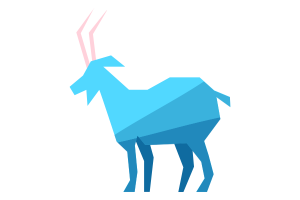Case Study
ICARUS
Early warning goats
Partners Involved: Animals (goats, elephants, felines, birds, …) and scientists
Type of Partnership: Win-Neutral for Public and Planet
Partnership Models: Data Partner
Using animals as “intelligent sensors” to predict natural disasters could save thousands of human lives and enable bringing more people to safety. At the same time, a better understanding of animal movement patterns and behaviors within the context of climate change, could contribute to better protect wildlife protection in the long term.
It is often said that animals can sense natural disasters—which could be explained by their ability to perceive low-frequency sound and vibrations. In 2004 for example, elephants in Indonesia fled inland before the tsunami hit.
The ICARUS (International Cooperation for Animal Research Using Space)—an international team of scientists, headed by Martin Wikelski from the Max Planck Institute for Ornithology in Radolfzell and the University of Konstanz—aims to provide scientific evidence to demonstrate these abilities and develop an early warning system for natural disasters, relying on observation of animals’ behaviors.
By tagging the animals with lightweight solar-powered transmitters, scientists monitor their movements for irregularities. For example, researchers tracked and compared the movements of 172 goats with volcanic activity in Mount Etna, Italy. Retrospectively, scientists could “predict” a total of seven major eruptions based on their data, when Vesuvius erupted in 2012.
A satellite tracking project was also launched in partnership with the German Aerospace Center (DLR) and the Russian space agency Roskosmos with the support of the European Space Agency (ESA) to monitor movements of animals on a global scale. In addition to identifying which behaviors best predict natural disasters, researchers will better understand how animals spread pathogens, and consequently contribute to appropriate conservation of endangered species. With this in mind, 30 mammal species (including elephants, giraffes, zebras and leopards) have already been equipped with electronic small ear tags in Namibia by scientists from the ICARUS team. Starting in 2019, the space-based system will track 120 tagged animals for research. The results will be published in a database that will be accessible to everyone. Around 150 research projects are already interested in using the tracking technology and data.
SDGs Targeted: SDG 11 on Sustainable Cities and Communities, SDG 13 on Climate Action, SDG 15 on Life on Land
Links & Sources:
Case Study
ICARUS
Early warning goats
Partners Involved: Animals (goats, elephants, felines, birds, …) and scientists
Type of Partnership: Win-Neutral for Public and Planet
Partnership Models: Data Partner
Using animals as “intelligent sensors” to predict natural disasters could save thousands of human lives and enable bringing more people to safety. At the same time, a better understanding of animal movement patterns and behaviors within the context of climate change, could contribute to better protect wildlife protection in the long term.
It is often said that animals can sense natural disasters—which could be explained by their ability to perceive low-frequency sound and vibrations. In 2004 for example, elephants in Indonesia fled inland before the tsunami hit.
The ICARUS (International Cooperation for Animal Research Using Space)—an international team of scientists, headed by Martin Wikelski from the Max Planck Institute for Ornithology in Radolfzell and the University of Konstanz—aims to provide scientific evidence to demonstrate these abilities and develop an early warning system for natural disasters, relying on observation of animals’ behaviors.
By tagging the animals with lightweight solar-powered transmitters, scientists monitor their movements for irregularities. For example, researchers tracked and compared the movements of 172 goats with volcanic activity in Mount Etna, Italy. Retrospectively, scientists could “predict” a total of seven major eruptions based on their data, when Vesuvius erupted in 2012.
A satellite tracking project was also launched in partnership with the German Aerospace Center (DLR) and the Russian space agency Roskosmos with the support of the European Space Agency (ESA) to monitor movements of animals on a global scale. In addition to identifying which behaviors best predict natural disasters, researchers will better understand how animals spread pathogens, and consequently contribute to appropriate conservation of endangered species. With this in mind, 30 mammal species (including elephants, giraffes, zebras and leopards) have already been equipped with electronic small ear tags in Namibia by scientists from the ICARUS team. Starting in 2019, the space-based system will track 120 tagged animals for research. The results will be published in a database that will be accessible to everyone. Around 150 research projects are already interested in using the tracking technology and data.
SDGs Targeted: SDG 11 on Sustainable Cities and Communities, SDG 13 on Climate Action, SDG 15 on Life on Land
Links & Sources:
